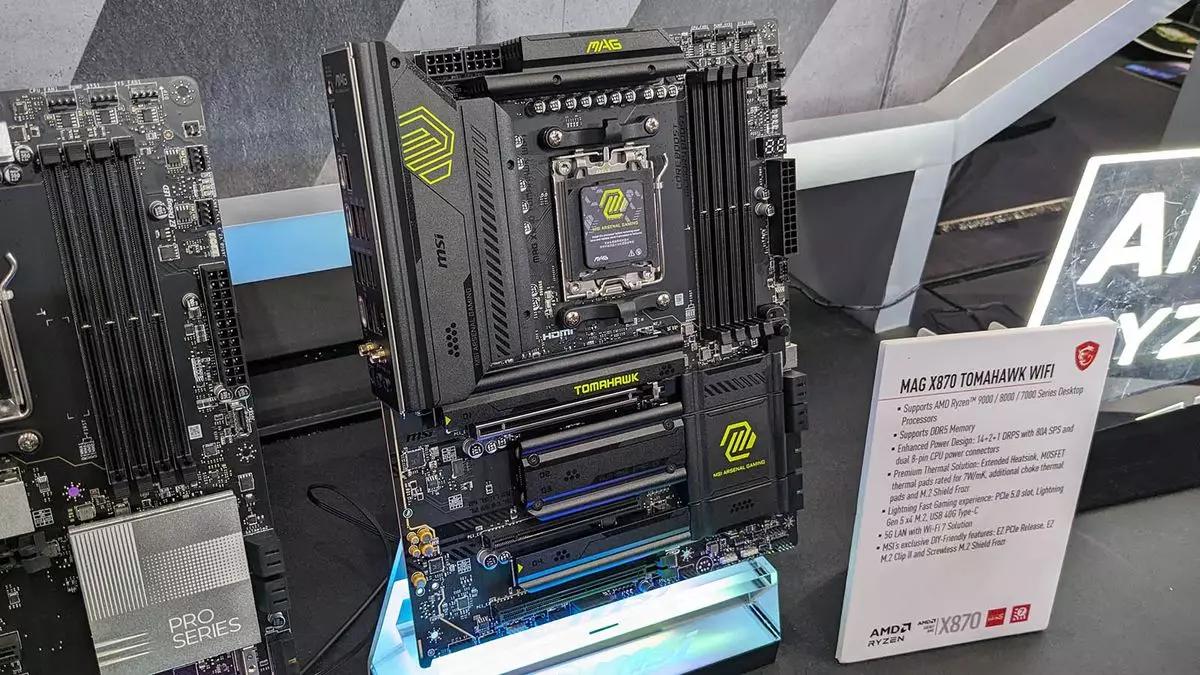MSI has recently showcased its upcoming motherboard range, the X870 and X870E, at Gamescom 2024. This unveiling has caught the attention of many, including Cowcotland, who were quick to notice an interesting feature on these boards. A peculiar addition to these motherboards is the presence of an 8-pin PCIe power connector located at the bottom. This begs the question – why has MSI included this feature in their new motherboard lineup?
According to reports from Cowcotland, the inclusion of these 8-pin PCIe power connectors is in anticipation of the power requirements of the next generation Nvidia and AMD graphics cards. It is speculated that these upcoming graphics cards will demand substantial amounts of power to function efficiently. This indicates that MSI is already preparing for the release of these high-power GPUs and ensuring that their motherboards can accommodate their power needs.
Traditionally, secondary power connectors have been a feature seen on high-end or overclocking-focused motherboards. These connectors serve the purpose of providing additional power to high-power graphics cards, thereby preventing strain on the motherboard. However, the inclusion of these connectors on more mainstream options, like the MSI X870 and X870E, is indeed significant. By incorporating the 8-pin PCIe power connectors, MSI is preparing for a scenario where users might install multiple graphics cards or demanding GPUs for various tasks such as productivity or AI workloads.
A standard PCIe x16 slot can provide up to 75W of power. With the addition of a 150W power supply from an 8-pin connector, the motherboard can potentially deliver a total of 225W of power. Moreover, with the possibility of adding up to 600W from a 12V-2×6 or 12VHPWR connector, the math suggests that these motherboards could support power outputs of 800W or more. While this extreme level of power output might be reserved for flagship GPUs like the RTX 5090, it is still a promising feature for users seeking high-performance setups.
The trend of increasing power consumption and TDPs (Thermal Design Power) in flagship graphics cards seems to be on the rise. For example, the RTX 4090 is reported to consume up to 450W, and even higher for overclocked variants. This trend indicates that Nvidia’s next-generation GPUs, such as the speculated RTX 5090, could require even higher power outputs, possibly exceeding 500W. While other manufacturers may not be incorporating 8-pin connectors across their motherboard ranges, MSI’s proactive approach raises the question – will next-gen GPUs truly demand such high power levels, or is this a precautionary measure by MSI?
MSI’s introduction of the X870 and X870E motherboards with 8-pin PCIe power connectors indicates a proactive approach towards meeting the power requirements of future high-performance GPUs. As the demand for more powerful graphics cards continues to grow, motherboard manufacturers like MSI are adapting to ensure compatibility and performance. It will be interesting to observe how other manufacturers respond to this trend and whether the inclusion of additional power connectors becomes a standard feature in upcoming motherboard releases. The evolving landscape of graphics card power consumption will undoubtedly shape the future of PC hardware and gaming technology.


Leave a Reply